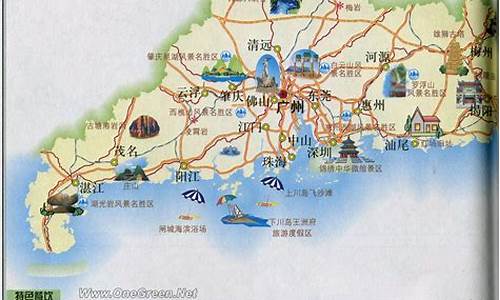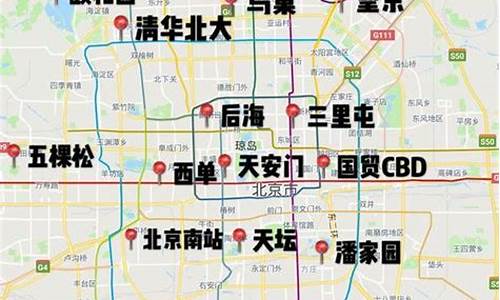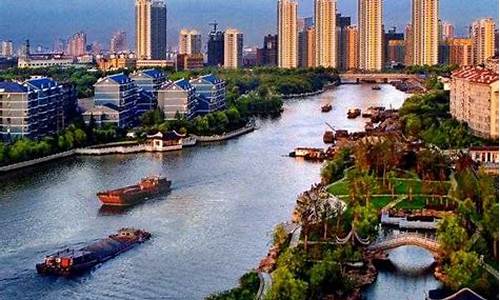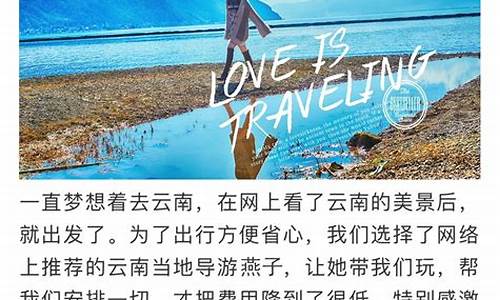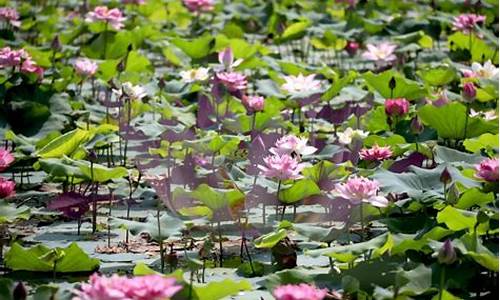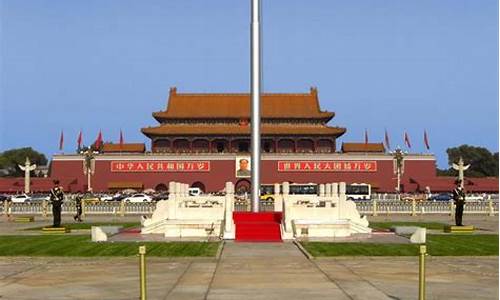旅游攻略的英文说法_旅游攻略的英文说法是什么
最近有些日子没和大家见面了,今天我想和大家聊一聊“旅游攻略的英文说法”的话题。如果你对这个话题还比较陌生,那么这篇文章就是为你而写的,让我们一起来了解一下吧。
1.厦门旅游景点地点介绍英语 厦门旅游攻略英文介绍
2.求英语作文"A travel guide of shanghai"(上海旅游指南)
3.设计一个旅游指南的英文
4.英语作文旅行指南5句话

厦门旅游景点地点介绍英语 厦门旅游攻略英文介绍
写一篇介绍景点的英语作文,80个单词就可以了
介绍景点的英语作文开头可以介绍该景点的历史故事,中段部分重点介绍该景点可游玩的部分,最后一段对整个景点总结即可。
介绍景点的英语作文双语范文如下:
Gulangyu is a small island of Xiamen. It’s like a garden on the water. Cars and buses are not allowed to drive there,which makes the island so quiet that music played on the piano and violin can be heard.
鼓浪屿是厦门的一个小岛。就像水上花园。汽车和公共汽车是不允许开到那里的,这使得岛上非常安静,可以听到钢琴和小提琴演奏的音乐。
Here the sky and the sea clearly meet on the horizon. When standing at the top of the Sunshine Rock,you can see much of the landscape of Xiamen,and when standing at its foot,you can gaze at the beautiful garden that surrounds it.
在这里,天空和大海在地平线上清晰地汇合。当你站在日光岩的顶端,你可以看到厦门的很多风景,当你站在它的脚下,你可以凝视美丽的花园围绕它。
Gulangyu produces bananas,coconuts,sugar cane and so on. The people here,warm,simple and hardworking,are making every effort to make the island more beautiful and they hope to welcome more visitors in the future.
鼓浪屿生产香蕉、椰子、甘蔗等。这里的人们热情、淳朴、勤劳,正在努力让这个岛屿变得更美丽,他们希望未来有更多的游客。
Such is Gulangyu,a beautiful and inviting island,where a warm welcome awaits
这就是鼓浪屿,一个美丽而诱人的岛屿,在这里,你会受到热烈的欢迎。
重点词汇解释:
1、scenic
adj. 风景优美的;舞台的;戏剧的
n. 风景胜地;风景照片
双语例句:
This is an extremely scenic part of America.
这是美国风景极其优美的一个地区。
2、tourist
n. 旅行者,观光客
adj. 旅游的
vt. 在旅行参观
vi. 旅游;观光
adv. 坐旅游车厢;坐经济舱
双语例句:
A_assing_ourist_napped_he_ncident.
一个过路的游客把这件事拍了下来。
厦门景点的英文名称
Gulangyu Islet, South Putuo, Xiamen botanical garden, Xiamen University, Jimei School Village, Garden Expo, Zhongshan Road pedestrian street, road, Feng Village, a Buddism godness Guanyin Mountain Sand Culture Park, Dadeng island.
一篇关于厦门景点的英语作文(适用高一)
Xiamen is China's first four special economic zones, it is Taiwanese, southern Jiangxi, southern Hunan to the east to the sea, the Pacific Rim will be developed into an international harbor.
"City at sea, the sea in the city," Xiamen is a graceful charm of the "Sea Garden." Island, reef, rock, temple, flowers, wood backed each other, the hometown of overseas Chinese customs, practices Fujian and Taiwan, coastal cuisine, exotic blend of construction, year-round spring weather is more of the charm of the sea icing on the cake. Beautiful scenery and pleasant weather, it can be said here is the best environment for cities. Surrounded by sea water, broad sandy beaches, warm sunshine, as a good ecological environment, Xiamen's clean air, a habitat for hundreds of thousands of egrets, Xiamen has formed a unique natural landscape, since ancient times, Xiamen Egret is one of the major habitats, so Xiamen Also known as "Lu Dao"; in addition to the beautiful natural scenery, Xiamen's urban environment is also very clean, is well-known tourist city.
求英语作文"A travel guide of shanghai"(上海旅游指南)
在新年期间,不少人会去泰国旅游,学好一点英语可以为自己的旅途增色不少,那么常用的英语有哪些呢?想必是不少回国人士比较关心的问题,和一起来了解了解泰国旅游英语指南,欢迎阅读。泰国旅游英语指南
泰国旅游常用英语之餐饮
sea food 海鲜
Tissue 餐巾纸
Order, please ! 点餐!
As soon as possible, please. 越快越好
How long does it take? 需要多长时间?
How long is the wait? 需要等多长时间?
No Spicy. 不要加辣。
Slight Spicy.微辣。
No ice 去冰
Little ice 少冰
Please bring me some ice cubes and water 请给我一些冰块和水。
Could you recommend a nice restaurant near here? 你能推荐附近的一个好点的餐馆吗?
I’d like a restaurant not too expensive 我想找一个不是很贵的餐馆。
Could you recommend that kind of restaurant? 你能推荐几个餐馆吗?
I’d like to have some local food. 我想吃些当地食品。
Where is main area for restaurants? 餐馆主要集中在什么地方?
I’d like a table by the window 我想要张靠窗的桌子。
May I have a menu, please? 我可以看看菜单吗?
Do you have a menu in Chinese? 你有中文菜单吗?
What do you recommend? 你有什么推荐?
Can you make it mild? 能做的清淡吗?
I’d like a glass of water, please 我想来杯水
Check bill,please ! 结账
What is the specialty of this place ? 这里的招牌菜是什么?
Any local dish to recommend ?有哪些地方菜推荐的吗?
What is the wifi password ? Wifi密码是多少?
Here is the tip. 这是你的小费。
真抱歉,我只有硬币(付小费)了,请不要介意。
I'm sorry,I only coins.Please never mind that.
泰国旅游常用英语之住宿
您好,请问现在可以登记入住吗?
Excuse me,Can I check-in now ?
您好,我在AGODA订了酒店,这是我的酒店确认单。
Hello, I booked a room in AGODA, this is my hotel voucher.
请问可以把我的房间换成双人床房吗?
Could I have my room change into a double room?
为什么没有空调? 我订的是空调房。
Why there is no air conditioning?I booked is air-conditioned room.
我明天要去曼谷了。我能在这里寄存行李吗?
I'm going to Bangkok tomorrow.Can I check my baggage here?
我可以借一下吹风机吗?May I borrow a hair-dryer?
我订了房间现在想办理住宿登记。
I made a reservation and I'd like to check in.
你好,我可以把行李先寄存在酒店里吗?
Hello, I can put in our luggage storage at the hotel it ?
我在房间号下面该填写什么呢?
What should I fill in under Room Number ?
明早7点能叫我起床吗?
Could you make me up at 7 o’clock tomorrow morning?
你能推荐一个经济点的酒店吗?
Can you recommend a hotel which is not too expensive?
我想要一间有浴室的房间。
I’d like a room with bath
这间房间收费多少?
How much is the room charge?
每晚多少钱?How much is it per night?
这是我的酒店确认单。Here is my confirmation slip.
你能帮我保管贵重物品吗?
Can you keep my valuables?
能给我一张有酒店地址的名片吗?
Can I have a card with the hotel address?
最近的地铁站在哪里?
Where is the nearest subway station?
有转换插头吗?
Do you have a plug adapter ?
Guest house 旅店、招待所
double room 大床房
Hair Dryer吹风机
air conditioner空调
fan风扇
bathroom独立洗手间
shared bathroom公用洗手间
24-hour hot water 24小时热水
refrigerator冰箱
泰国旅游常用英语之问路及交通
请拉我去这个地址。Take me to this address, please.
去这里。To this place, please.
你能告诉我去XX宾馆(酒店)的路吗?
Can you tell me the way to the XX Hotel ,please ?
去XXX怎么走 ?How can I get to XXX ?
步行去那里需要多长时间? How long does it take to get there on foot?
你能告诉我我应该坐哪一辆车吗? Could you tell me which bus should I take?
先生,打扰了,这是去XX的车吗? Excuse me,sir,it this the bus going to the XX ?
车费多少钱? How much is the fare?
去XXX多少钱?How much is it to XXX ?
请你提醒我在XX下车好吗? Will you please tell me when we get to the XX ?
能告诉我什么时候下车吗?Could you tell me when to get off ?
到那儿要用多长时间呢? How long does it take to get there ?
请再说一次Please say it again.
打表 use the meter
我迷路了 I’m lost
请给我一张市区地图?May I have a city map ?
谢谢你的帮助。Thank you for your help
厕所在哪里?Where is the toilet ?
请问旅游问讯处在哪里? Where is the tourist information centre ?
巴士车站在哪里 ?Where is the bus stop (taxi stand) ?
乘计程车到市中心需要多少钱 ?How much does it cost to the city centre by taxi ?
请停下来。Stop here, please
几点发车?What time does it leave ?
有去XXX的巴士吗? Is there a bus that goes to XXX ?
卖票的地方在哪?Where is the ticket office ?
我可以看看时间表吗?May I see a timetable?
可以预订座位吗?Are any reserved seats available?
有直达车吗?Is it a direct train?
我可以打开窗户吗?May I open the window?
我能带者这些行李吗? Could I keep this baggage?
巴士在这停多久?How long does the bus stop here?
我在这里下车 I’ll get off here
你能为我叫辆出租车吗?Could you call a taxi for me?
收费和仪表盘上的不一样。The fare is different from the meter.
我在哪里上船?Where can I board the ship?
能告诉我在地图上的什么位置吗?Could you show me on the map where I am?
从这里乘出租车到飞机场需要多长时间?
How long does it take to go to the airport by taxi?
银行在哪?Where is the bank?
泰国旅游常用英语之购物
能便宜点吗? Can you cut the price down a bit ?
太贵啦 It’s too expensive for me / That’s too expensive.
打个折吧。Would you give me a discount.
能打些折吗?Could you give me a little discount?
可以便宜点儿吗?Can you lower the price ?
我能得到些折扣吗?Can I get a little discount?
总共多少钱? How much are they ?
一共多少钱?How much it all together ?
我能尝尝吗?Can I try some?
我只是随便看看。I’m just looking.
有懂中文的工作人员吗? Does anyone here speak Chinese?
送给朋友的礼物 A gift for my friend
我在为我妈妈找一些东西。I’m looking for something for my mother.
我想看看这个。I’d like to see this .
你有其他风格的吗?Do you have any other style?
你们有什么颜色的? What kind of colors do you have?
你有其他颜色的这个东西吗? Do you have the same thing in any other colors?
你有更大的吗?Do you have a bigger one?
我可以试穿吗?Can I try this on?
换衣间在哪?Where is the fitting room?
我能看一下这个包吗?Could you show me this bag?
你有别的款式吗?Do you have another design?
我要这个 I’ll take this 我要X个这样的。I’d like X same as this.
不,够啦。No. That’s all
含税了吗?Does it include tax?
还没有找我钱呢。I don’t have my change back yet.
我在哪能得到退税表?Where can I get a form. for tax refund?
能给我张退税表吗?May I have the form. for tax refund?
那里可以拿到KING POWER的打折卡?where can I get the discount card of kingpower?
你推荐我买哪些纪念品?What souvenirs do you recommend to buy ?
设计一个旅游指南的英文
Shanghai, Hu for short, is a renowned international metropolis drawing more and more attention from all over the world. Situated on the estuary of Yangtze River, it serves as the most influential economic, financial, international trade, cultural, science and technology center in East China. Also it is a popular destination for visitors to sense the pulsating development of the country.
In addition to its modernization, the city's multicultural flair endows it with a unique glamour. Here, one finds the perfect blend of cultures, the modern and the traditional , and the western and the oriental. New skyscrapers and old Shikumen together draw the skyline of the city. Western customs and Chinese traditions intertwined and formed Shanghai's culture, making a visitor's stay truly memorable.
Shanghai is split in two by the Huangpu River. The most basic division of the area isPuxi West of the river, versus Pudong , East of the river. Both terms can be used in a general sense for everything on their side of the river, but are often used in a much narrower sense where Puxiis the older (since the 19th century) city center and Pudong the mass of new (since the 1980s) high-rise development across the river.
The Bund (外滩 Wàitān) The colonial riverside of old Shanghai, has dozens of historical buildings lining the Huangpu River, which once housed numerous foreign banks and trading houses. The riverfront walkway has recently undergone a major reconstruction and reopened to the public in March 2010.
Changning (长宁区; Chángníngqū) Hongqiao International Airport sits here in addition to the Shanghai Zoo. Changning is a very large, residential district but in recent years has seen more commercial and entertainment hubs develop, especially the area around Zhongshan Park.
Shanghai (Luwan, Xuhui)Leafy district once known as the Paris of the East, includes the refurbished shikumen houses of Xintiandi and Shanghai Stadium, one of Shanghai's most rich and vibrant neighborhoods. The Xujiahui shopping district is home to five large shopping malls.
Shanghai is a fascinating mix of East and West. It has historic shikumen houses that blend the styles of Chinese houses with European design flair, and it has one of the richest collections of Art Deco buildings in the world. As there were so many concessions (designated districts) to Western powers during the turn of the 20th century, in many places the city has a cosmopolitan feel. There is everything from classic Parisian style, to Tudor style buildings that give an English flair and 1930s buildings reminiscent of New York or Chicago.
There is a saying that goes, "Shanghai is heaven for the rich, hell for the poor," People from all over China flock to Shanghai — everyone from farmers seeking jobs in manual labour to university graduates seeking to start a career or wanting to live in a cool up-tempo city. Even well-off people, though, complain that buying a home is becoming impossible; prices have skyrocketed in the last few years.
Shanghai is one of the main industrial centers of China, playing a key role in China’s heavy industries. A large number of industrial zones are backbones of Shanghai's secondary industry.
Hongkou Home of Lu Xun Park as well as a football stadium, once home to Shanghai's substantial Jewish population in the first half of the 20th century.
Huangpu excluding the Old CityThe traditional center of Shanghai, home to People's Square, People's Park, the Shanghai Museum, Shanghai Urban Planning Exhibition Hall, City Hall, and the city's largest metro station, underneath a large underground shopping mall. Adjacent to People's Square is the East Nanjing Road pedestrian mall.
Jing'an District Home to Jing'an Temple, this area has been continuously inhabited since the 3rd century AD. The commercial district of West Nanjing Road extends from the center of Jing'an to People's Square.
Old City Home of Yu Garden, the City God Temple and Huxingting Tea House, this is the historic Chinese area of the city, where much of the old wooden architecture of ancient Shanghai is still preserved.
Yangpu Where Fudan University and Tongji University are located. Also contains the excellent and spacious Gongqing Forest Park. For shoppers, Wujiaochang is situated here.
Zhabei Zhabei is an older district of Shanghai and the location of the Shanghai Railway Station. There is a large park, Daning-Lingshi, north of the station, as well as the Shanghai Circus.
While Shanghai has been around as a village since the Song Dynasty, a thousand years or so ago, it only rose to prominence after China lost the First Opium War in 1842. Shanghai was one of five cities which were opened to trade as treaty Ports. Shanghai grew amazingly after that; until then nearby cities like Hangzhou, Suzhou and Nanjing had been far more important, but today Shanghai is definitely the center of the region.
Eight nations — Germany, France, Italy, Russia, Austria-Hungary, Japan, the United States and the United Kingdom — were granted concessions in Shanghai, areas that they controlled and where Chinese law did not apply. Most of these were jointly administered as the "International Settlement", but the French ran theirs separately. In all of them, the population was mainly Chinese, of course, but the legal system was foreign and the police included many Sikhs and French gendarmes. They were located North of the Chinese city. Today all these areas are considered parts of downtown Shanghai.
不知道你什么水平,你好好看看什么资源适合你可以摘取
英语作文旅行指南5句话
设计一个旅游指南的英文是Design a travel guide。旅游指南本书是“郑州市社区科普大学系列教材”之一。全书共分九讲,从旅游出行前的准备、旅行的技巧、旅行安全常识、出境旅游常识、旅游维权等多个方面介绍了旅游的相关知识。
本书立足于大众化,讲求方便实用,同时也融入了以满足游客个性化需求为导向的“新旅游”思想,以介绍国内旅游为主,也介绍了出境旅游的基本知识,注重旅游的品质,希望能够给市民提供全方位的旅游指导。
本书既能满足喜欢旅游的朋友了解更多旅游信息的需要,又能给有旅游愿望而暂无旅游经验的朋友提供必要的帮助。
“旅”是旅行,外出,即为了实现某一目的而在空间上从甲地到乙地的行进过程;“游”是外出游览、观光、娱乐,即为达到这些目的所作的旅行。二者合起来即旅游。所以,旅行偏重于行,旅游不但有“行”,且有观光、娱乐含义。
中央纪委国家监委网站的相关统计数据显示,“中秋国庆期间违反中央八项规定精神问题监督举报曝光专区”近三年中通报了989起案例。
Shanghai, Hu for short, is a renowned international metropolis drawing more and more attention from all over the world. Situated on the estuary of Yangtze River, it serves as the most influential economic, financial, international trade, cultural, science and technology center in East China. Also it is a popular destination for visitors to sense the pulsating development of the country.
In addition to its modernization, the city's multicultural flair endows it with a unique glamour. Here, one finds the perfect blend of cultures, the modern and the traditional , and the western and the oriental. New skyscrapers and old Shikumen together draw the skyline of the city. Western customs and Chinese traditions intertwined and formed Shanghai's culture, making a visitor's stay truly memorable.
Shanghai is split in two by the Huangpu River. The most basic division of the area isPuxi West of the river, versus Pudong , East of the river. Both terms can be used in a general sense for everything on their side of the river, but are often used in a much narrower sense where Puxiis the older (since the 19th century) city center and Pudong the mass of new (since the 1980s) high-rise development across the river.
The Bund (外滩 Wàitān) The colonial riverside of old Shanghai, has dozens of historical buildings lining the Huangpu River, which once housed numerous foreign banks and trading houses. The riverfront walkway has recently undergone a major reconstruction and reopened to the public in March 2010.
Changning (长宁区; Chángníngqū) Hongqiao International Airport sits here in addition to the Shanghai Zoo. Changning is a very large, residential district but in recent years has seen more commercial and entertainment hubs develop, especially the area around Zhongshan Park.
Shanghai (Luwan, Xuhui)Leafy district once known as the Paris of the East, includes the refurbished shikumen houses of Xintiandi and Shanghai Stadium, one of Shanghai's most rich and vibrant neighborhoods. The Xujiahui shopping district is home to five large shopping malls.
Shanghai is a fascinating mix of East and West. It has historic shikumen houses that blend the styles of Chinese houses with European design flair, and it has one of the richest collections of Art Deco buildings in the world. As there were so many concessions (designated districts) to Western powers during the turn of the 20th century, in many places the city has a cosmopolitan feel. There is everything from classic Parisian style, to Tudor style buildings that give an English flair and 1930s buildings reminiscent of New York or Chicago.
There is a saying that goes, "Shanghai is heaven for the rich, hell for the poor," People from all over China flock to Shanghai — everyone from farmers seeking jobs in manual labour to university graduates seeking to start a career or wanting to live in a cool up-tempo city. Even well-off people, though, complain that buying a home is becoming impossible; prices have skyrocketed in the last few years.
Shanghai is one of the main industrial centers of China, playing a key role in China’s heavy industries. A large number of industrial zones are backbones of Shanghai's secondary industry.
Hongkou Home of Lu Xun Park as well as a football stadium, once home to Shanghai's substantial Jewish population in the first half of the 20th century.
Huangpu excluding the Old CityThe traditional center of Shanghai, home to People's Square, People's Park, the Shanghai Museum, Shanghai Urban Planning Exhibition Hall, City Hall, and the city's largest metro station, underneath a large underground shopping mall. Adjacent to People's Square is the East Nanjing Road pedestrian mall.
Jing'an District Home to Jing'an Temple, this area has been continuously inhabited since the 3rd century AD. The commercial district of West Nanjing Road extends from the center of Jing'an to People's Square.
Old City Home of Yu Garden, the City God Temple and Huxingting Tea House, this is the historic Chinese area of the city, where much of the old wooden architecture of ancient Shanghai is still preserved.
Yangpu Where Fudan University and Tongji University are located. Also contains the excellent and spacious Gongqing Forest Park. For shoppers, Wujiaochang is situated here.
Zhabei Zhabei is an older district of Shanghai and the location of the Shanghai Railway Station. There is a large park, Daning-Lingshi, north of the station, as well as the Shanghai Circus.
While Shanghai has been around as a village since the Song Dynasty, a thousand years or so ago, it only rose to prominence after China lost the First Opium War in 1842. Shanghai was one of five cities which were opened to trade as treaty Ports. Shanghai grew amazingly after that; until then nearby cities like Hangzhou, Suzhou and Nanjing had been far more important, but today Shanghai is definitely the center of the region.
Eight nations — Germany, France, Italy, Russia, Austria-Hungary, Japan, the United States and the United Kingdom — were granted concessions in Shanghai, areas that they controlled and where Chinese law did not apply. Most of these were jointly administered as the "International Settlement", but the French ran theirs separately. In all of them, the population was mainly Chinese, of course, but the legal system was foreign and the police included many Sikhs and French gendarmes. They were located North of the Chinese city. Today all these areas are considered parts of downtown Shanghai.
好了,今天关于“旅游攻略的英文说法”的探讨就到这里了。希望大家能够对“旅游攻略的英文说法”有更深入的认识,并且从我的回答中得到一些帮助。
声明:本站所有文章资源内容,如无特殊说明或标注,均为采集网络资源。如若本站内容侵犯了原著者的合法权益,可联系本站删除。


